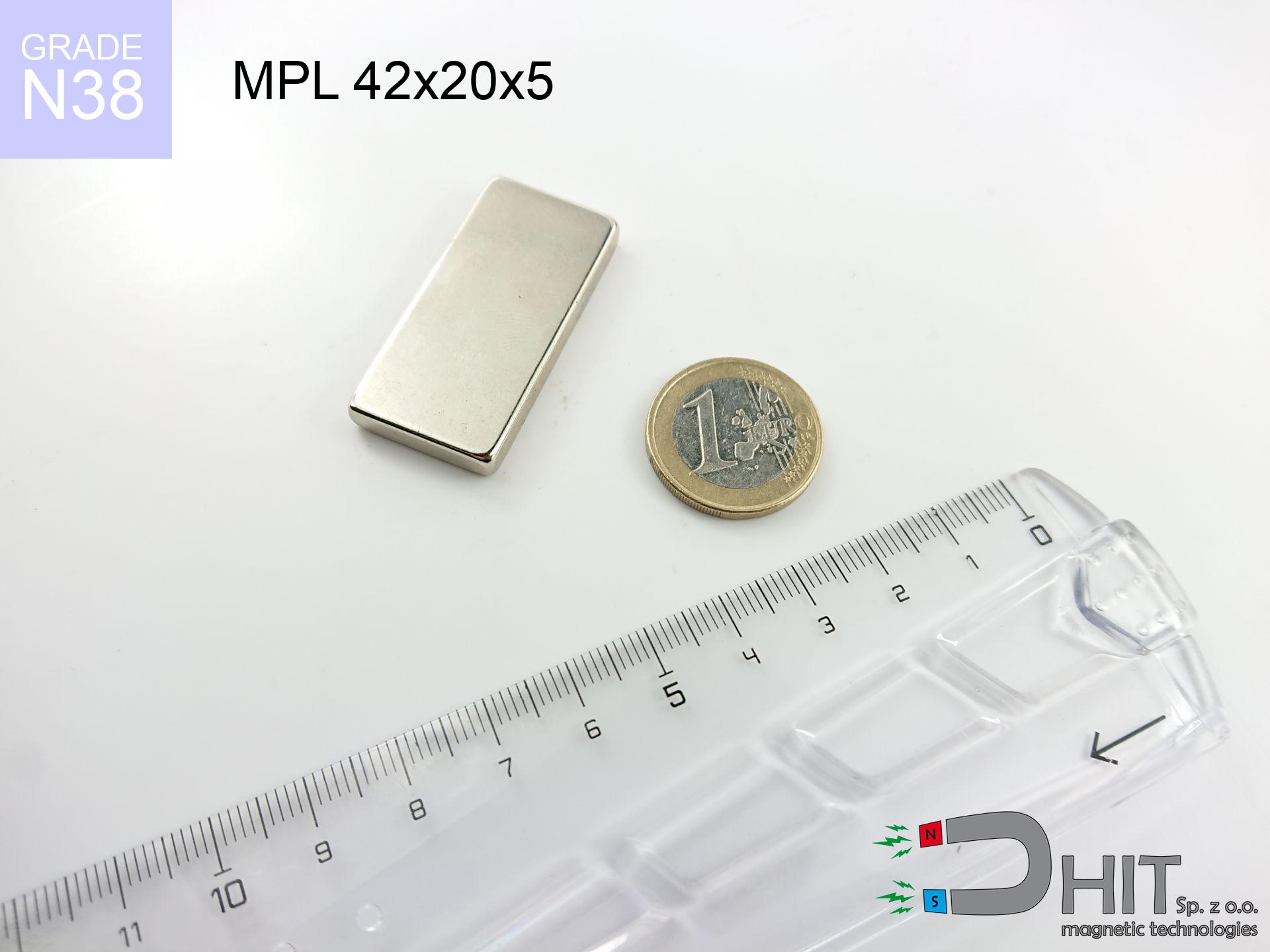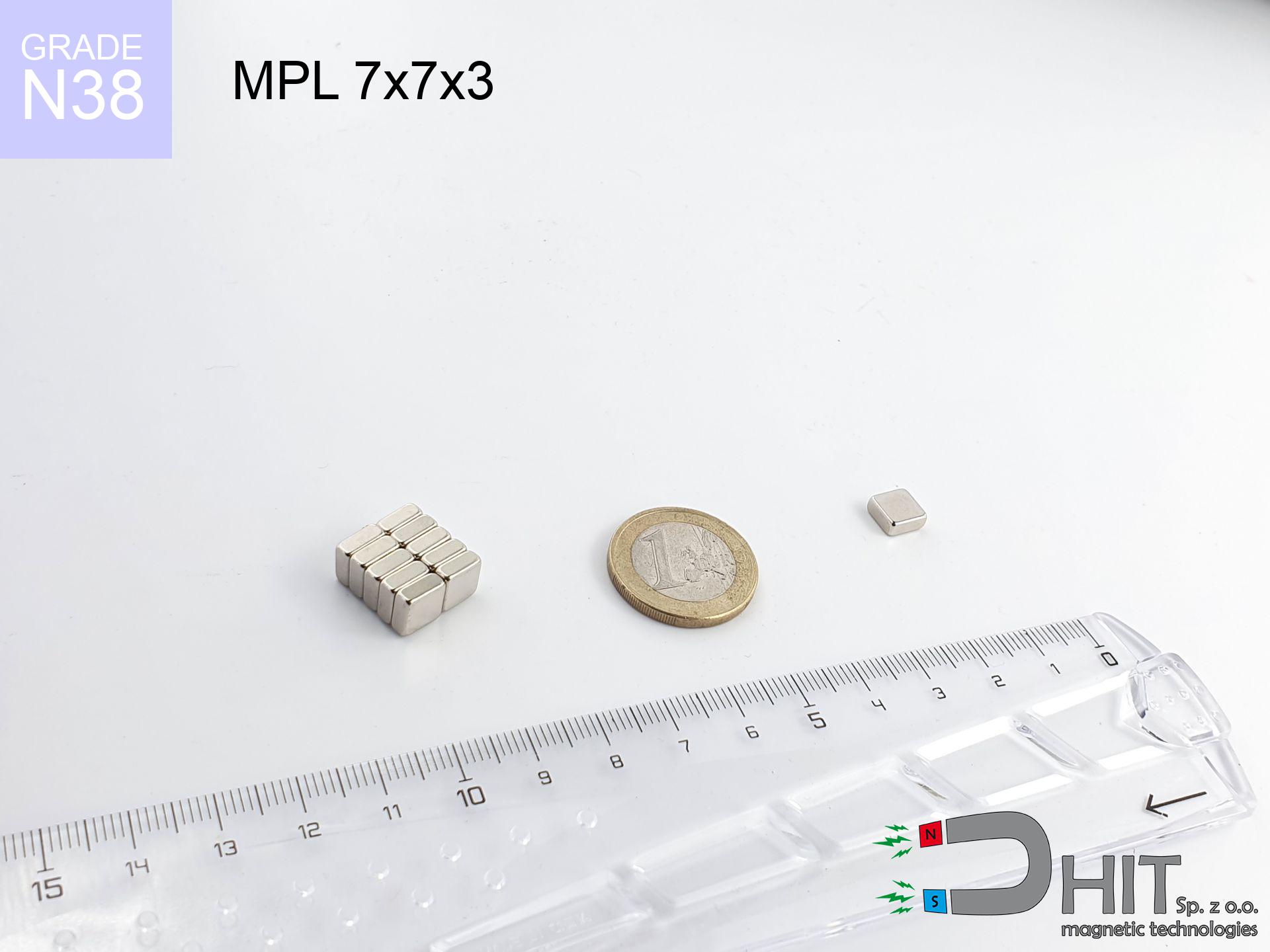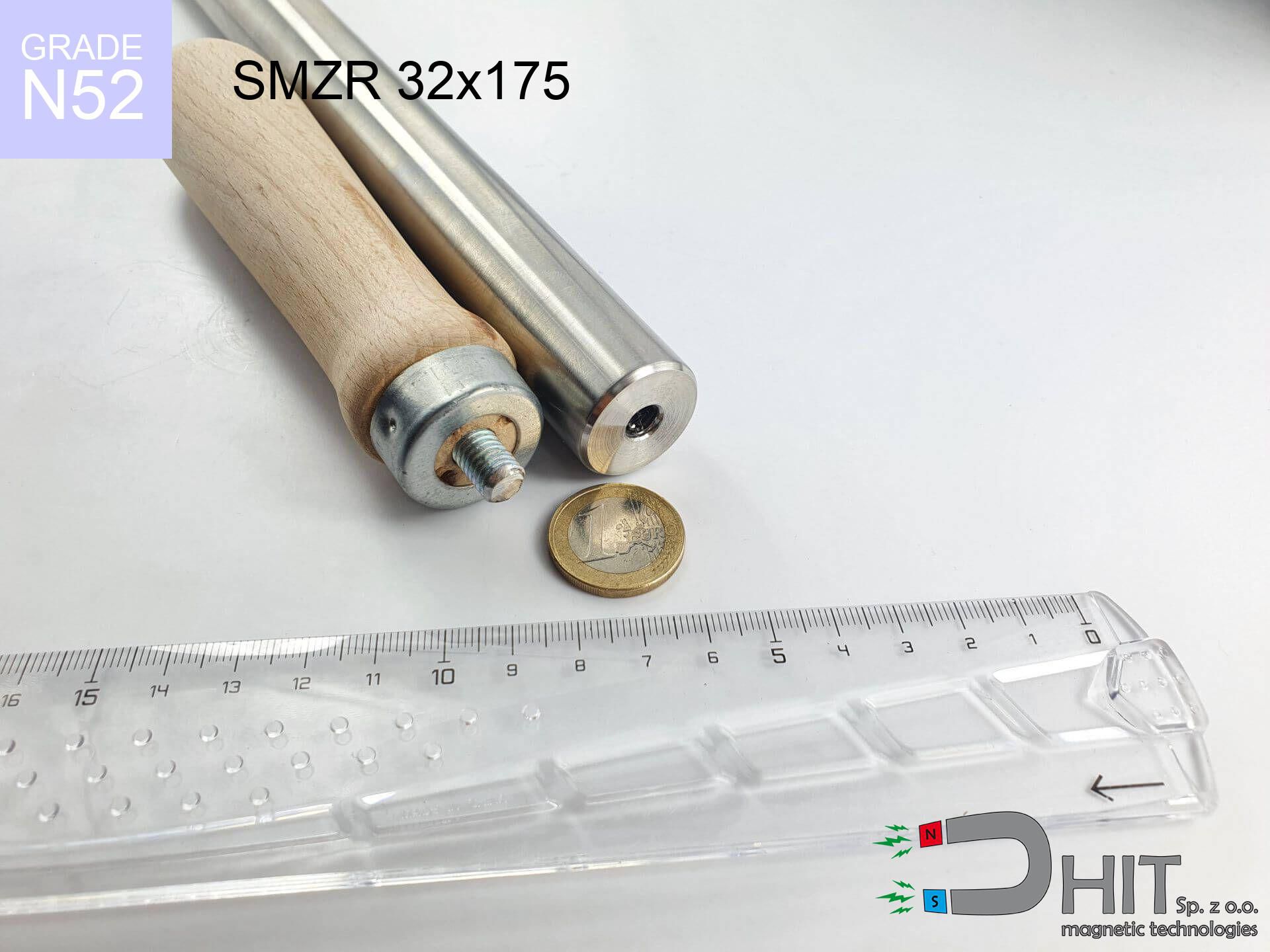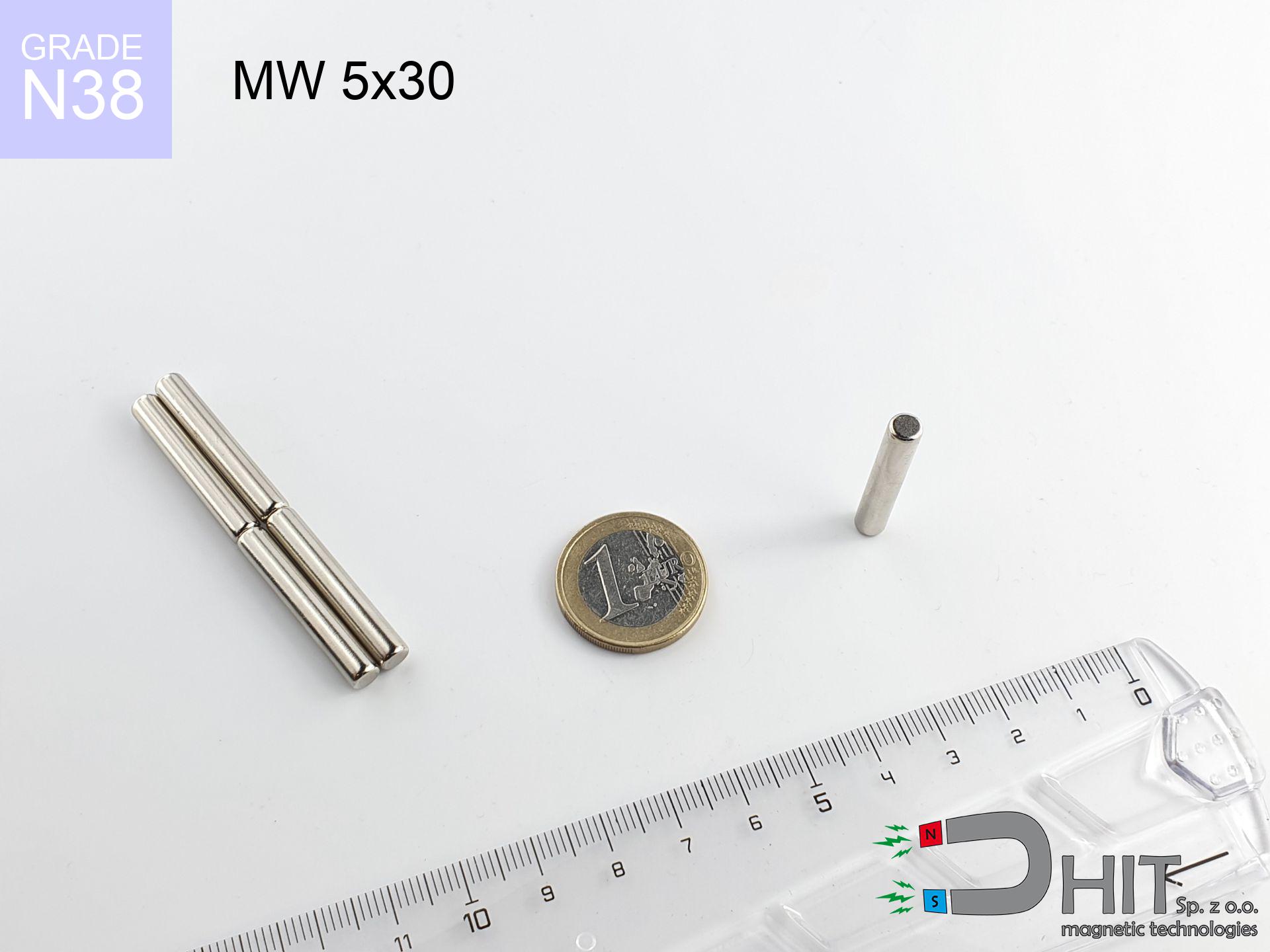UMP 107x40 [M8+M10] GW F400 Lina / N38 - search holder
search holder
Catalog no 210384
GTIN: 5906301814030
Diameter Ø
107 mm [±1 mm]
Height
40 mm [±1 mm]
Weight
2350 g
Load capacity
480 kg / 4707.19 N
Coating
[NiCuNi] Nickel
Magnetic Flux
~ 8 000 Gauss [±5%]
450.00 ZŁ with VAT / pcs + price for transport
365.85 ZŁ net + 23% VAT / pcs
bulk discounts:
Need more?Can't decide what to choose?
Call us now
+48 22 499 98 98
or contact us via
request form
the contact form page.
Specifications and appearance of magnetic components can be verified with our
modular calculator.
Same-day shipping for orders placed before 14:00.
💡 Guide: How to choose a decent magnet and not get ripped off?
Instead of believing fairy tales on YouTube with tests on uncertified equipment, see what really determines your magnet's power:
- 📏 Magnet thickness in the casing (min. 10mm) – This is what matters most! Thin magnets are weak. Thanks to the 1cm thickness of N52 neodymium, your magnet "sees" metal even through thick rust and mud.
- 🛡️ Armored protection (Black Epoxy) – Forget about rust. This coating doesn't chip when hitting rocks and protects the magnet in water much better than regular nickel, which fails quickly.
- 🧲 Eyelets that don't steal power – Made of special non-magnetic steel, so they don't stick to the magnet and don't block the force. Important: mount only one eyelet at a time! Using 3 at once is a mistake that weakens the magnet.
- 🧶 Certified rope (min. 8mm) – You gain the certainty that your gear won't stay at the bottom. It's thick and comfortable, so it doesn't cut your fingers when pulling out heavy scrap metal.
- 🚀 Our advantage: We are the only ones combining the strongest N52 neodymium (10mm thick) with non-magnetic eyelets. This is real power and durability you won't find anywhere else.
Invest in solid equipment and enjoy the results!
UMP 107x40 [M8+M10] GW F400 Lina / N38 - search holder
Specification / characteristics UMP 107x40 [M8+M10] GW F400 Lina / N38 - search holder
| properties | values |
|---|---|
| Cat. no. | 210384 |
| GTIN | 5906301814030 |
| Production/Distribution | Dhit sp. z o.o. |
| Country of origin | Poland / China / Germany |
| Customs code | 85059029 |
| Diameter Ø | 107 mm [±1 mm] |
| Height | 40 mm [±1 mm] |
| Weight | 2350 g |
| Load capacity ~ ? | 480 kg / 4707.19 N |
| Coating | [NiCuNi] Nickel |
| Holder Type | 2 sided |
| Material Type | Structural steel S235 (ferrous) |
| Magnetic Flux | ~ 8 000 Gauss [±5%] |
| Rope Length | 25 m |
| Rope Capacity | ~ 1595 kg |
| Rope Diameter | Ø 8 mm |
| Gloves | 1 pair |
| Size/Mount Quantity | 1xM8/2xM10 |
| Manufacturing Tolerance | ±1 mm |
Magnetic properties of material N38
| properties | values | units |
|---|---|---|
| remenance Br [Min. - Max.] ? | 12.2-12.6 | kGs |
| remenance Br [Min. - Max.] ? | 1220-1260 | T |
| coercivity bHc ? | 10.8-11.5 | kOe |
| coercivity bHc ? | 860-915 | kA/m |
| actual internal force iHc | ≥ 12 | kOe |
| actual internal force iHc | ≥ 955 | kA/m |
| energy density [Min. - Max.] ? | 36-38 | BH max MGOe |
| energy density [Min. - Max.] ? | 287-303 | BH max KJ/m |
| max. temperature ? | ≤ 80 | °C |
Physical properties of sintered neodymium magnets Nd2Fe14B at 20°C
| properties | values | units |
|---|---|---|
| Vickers hardness | ≥550 | Hv |
| Density | ≥7.4 | g/cm3 |
| Curie Temperature TC | 312 - 380 | °C |
| Curie Temperature TF | 593 - 716 | °F |
| Specific resistance | 150 | μΩ⋅Cm |
| Bending strength | 250 | Mpa |
| Compressive strength | 1000~1100 | Mpa |
| Thermal expansion parallel (∥) to orientation (M) | (3-4) x 106 | °C-1 |
| Thermal expansion perpendicular (⊥) to orientation (M) | -(1-3) x 10-6 | °C-1 |
| Young's modulus | 1.7 x 104 | kg/mm² |
Other deals
Strengths and weaknesses of NdFeB magnets.
Besides their high retention, neodymium magnets are valued for these benefits:
- They have stable power, and over more than ten years their performance decreases symbolically – ~1% (in testing),
- They are extremely resistant to demagnetization induced by external field influence,
- The use of an elegant finish of noble metals (nickel, gold, silver) causes the element to present itself better,
- The surface of neodymium magnets generates a unique magnetic field – this is one of their assets,
- Neodymium magnets are characterized by extremely high magnetic induction on the magnet surface and can work (depending on the shape) even at a temperature of 230°C or more...
- Possibility of custom creating and optimizing to complex conditions,
- Significant place in high-tech industry – they find application in magnetic memories, electromotive mechanisms, medical devices, also complex engineering applications.
- Compactness – despite small sizes they generate large force, making them ideal for precision applications
What to avoid - cons of neodymium magnets: weaknesses and usage proposals
- To avoid cracks upon strong impacts, we recommend using special steel holders. Such a solution secures the magnet and simultaneously improves its durability.
- Neodymium magnets lose power when exposed to high temperatures. After reaching 80°C, many of them experience permanent drop of strength (a factor is the shape as well as dimensions of the magnet). We offer magnets specially adapted to work at temperatures up to 230°C marked [AH], which are very resistant to heat
- Magnets exposed to a humid environment can rust. Therefore when using outdoors, we recommend using waterproof magnets made of rubber, plastic or other material resistant to moisture
- We recommend cover - magnetic mechanism, due to difficulties in creating threads inside the magnet and complex shapes.
- Potential hazard related to microscopic parts of magnets pose a threat, if swallowed, which becomes key in the context of child health protection. It is also worth noting that small elements of these products are able to complicate diagnosis medical in case of swallowing.
- With mass production the cost of neodymium magnets can be a barrier,
Maximum lifting force for a neodymium magnet – what affects it?
The load parameter shown refers to the maximum value, measured under ideal test conditions, namely:
- using a sheet made of high-permeability steel, acting as a magnetic yoke
- possessing a thickness of minimum 10 mm to avoid saturation
- with a plane cleaned and smooth
- without any air gap between the magnet and steel
- for force applied at a right angle (pull-off, not shear)
- at room temperature
Practical lifting capacity: influencing factors
Effective lifting capacity is influenced by specific conditions, including (from most important):
- Air gap (betwixt the magnet and the metal), since even a tiny clearance (e.g. 0.5 mm) can cause a reduction in force by up to 50% (this also applies to varnish, rust or dirt).
- Load vector – maximum parameter is obtained only during pulling at a 90° angle. The force required to slide of the magnet along the surface is usually several times lower (approx. 1/5 of the lifting capacity).
- Element thickness – for full efficiency, the steel must be adequately massive. Paper-thin metal limits the lifting capacity (the magnet "punches through" it).
- Steel grade – ideal substrate is pure iron steel. Hardened steels may have worse magnetic properties.
- Plate texture – ground elements guarantee perfect abutment, which improves field saturation. Uneven metal reduce efficiency.
- Thermal conditions – neodymium magnets have a negative temperature coefficient. At higher temperatures they lose power, and in frost they can be stronger (up to a certain limit).
* Lifting capacity was measured with the use of a polished steel plate of suitable thickness (min. 20 mm), under perpendicular detachment force, however under shearing force the holding force is lower. Additionally, even a small distance {between} the magnet and the plate lowers the load capacity.
H&S for magnets
Eye protection
Beware of splinters. Magnets can explode upon uncontrolled impact, ejecting sharp fragments into the air. Eye protection is mandatory.
Electronic hazard
Data protection: Strong magnets can damage data carriers and sensitive devices (pacemakers, hearing aids, mechanical watches).
Safe operation
Before use, read the rules. Sudden snapping can destroy the magnet or injure your hand. Think ahead.
Impact on smartphones
A strong magnetic field disrupts the functioning of magnetometers in phones and GPS navigation. Keep magnets close to a device to prevent breaking the sensors.
Hand protection
Large magnets can smash fingers in a fraction of a second. Under no circumstances put your hand betwixt two strong magnets.
Heat sensitivity
Control the heat. Heating the magnet above 80 degrees Celsius will ruin its magnetic structure and pulling force.
Fire risk
Machining of NdFeB material poses a fire hazard. Neodymium dust oxidizes rapidly with oxygen and is difficult to extinguish.
Danger to the youngest
Product intended for adults. Tiny parts pose a choking risk, causing severe trauma. Keep away from children and animals.
Nickel coating and allergies
Warning for allergy sufferers: The Ni-Cu-Ni coating consists of nickel. If skin irritation occurs, immediately stop handling magnets and wear gloves.
Danger to pacemakers
Patients with a pacemaker have to keep an large gap from magnets. The magnetic field can disrupt the operation of the implant.
Safety First!
Need more info? Check our post: Why are neodymium magnets dangerous?

![Search magnet UMP 107x40 [M8+M10] GW F400 Lina / N38 - GOLD Series Search magnet UMP 107x40 [M8+M10] GW F400 Lina / N38 - GOLD Series](https://cdn3.dhit.pl/graphics/banners/magnet.webp)
![UMP 107x40 [M8+M10] GW F400 Lina / N38 - search holder](https://cdn3.dhit.pl/graphics/products/ump-107x40-m8+m10-gw-f400-+lina-bel.jpg)





